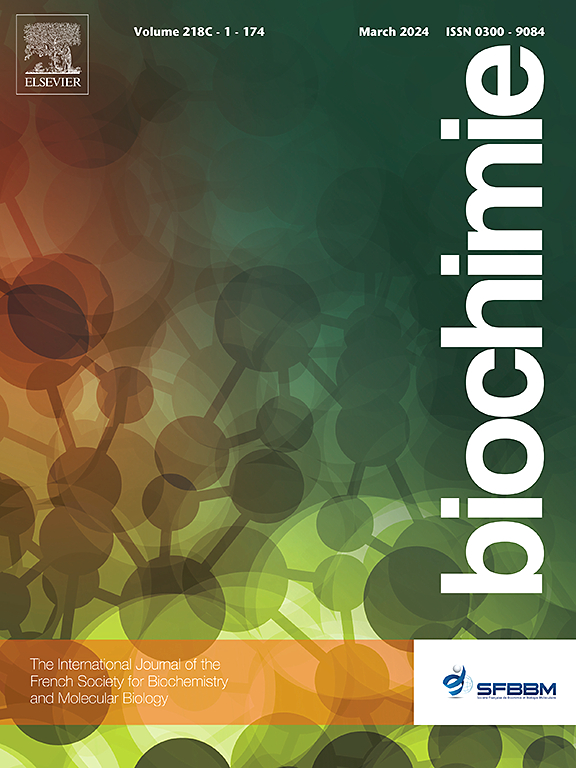Small molecule based targeting of the CssA RNA thermometer: insights from computational and biophysical approaches
IF 3
3区 生物学
Q2 BIOCHEMISTRY & MOLECULAR BIOLOGY
引用次数: 0
Abstract
The exploration of RNA as a therapeutic target is relatively recent. The field of RNA targeting with small molecules remains elusive despite significant advances via approaches such as the development of bioinformatics tools and strategies facilitating improved modes of action. Non-coding RNAs like RNA thermometers reported in many bacterial pathogens are exciting targets due to the translational control exerted by these RNA elements. The current work involves virtual screening of an in house library of small molecules against CssA RNA thermometer from Neisseria meningitidis via docking and molecular dynamics (MD) simulations followed by in vitro experiments to affirm the binding of small molecules to the target RNA. Fluorescence binding assay and NMR provide evidence for RNA thermometer-small molecule binding. The present study would open new avenues in the domain of small molecule-based targeting of RNA. Interestingly, an RNA thermometer has never been exploited as a drug target. Targeting such RNA elements with small molecules would facilitate structure-based small molecule design with better affinity for the target RNA. From among spiro-pyrrolidine based heterocycles that showed the best binding affinity with the RNAs, a small molecule was identified as the top lead with the potential for targeting the CssA RNA thermometer.

基于小分子靶向的CssA RNA温度计:来自计算和生物物理方法的见解。
RNA作为治疗靶点的探索是相对较新的。尽管生物信息学工具和策略的发展促进了作用模式的改进,但小分子RNA靶向领域仍然难以捉摸。在许多细菌病原体中报道的非编码RNA(如RNA温度计)是令人兴奋的靶标,因为这些RNA元件施加了翻译控制。目前的工作包括通过对接和分子动力学(MD)模拟对来自脑膜炎奈瑟菌的CssA RNA温度计的内部小分子库进行虚拟筛选,然后进行体外实验以确认小分子与靶RNA的结合。荧光结合试验和核磁共振为RNA温度计-小分子结合提供了证据。本研究将为RNA小分子靶向领域开辟新的途径。有趣的是,RNA温度计从未被用作药物靶标。用小分子靶向这类RNA元件将有利于基于结构的小分子设计,对目标RNA具有更好的亲和力。在与RNA表现出最佳结合亲和力的螺-吡咯烷基杂环中,一个小分子被确定为具有靶向CssA RNA温度计潜力的顶级先导物。
本文章由计算机程序翻译,如有差异,请以英文原文为准。
求助全文
约1分钟内获得全文
求助全文
来源期刊

Biochimie
生物-生化与分子生物学
CiteScore
7.20
自引率
2.60%
发文量
219
审稿时长
40 days
期刊介绍:
Biochimie publishes original research articles, short communications, review articles, graphical reviews, mini-reviews, and hypotheses in the broad areas of biology, including biochemistry, enzymology, molecular and cell biology, metabolic regulation, genetics, immunology, microbiology, structural biology, genomics, proteomics, and molecular mechanisms of disease. Biochimie publishes exclusively in English.
Articles are subject to peer review, and must satisfy the requirements of originality, high scientific integrity and general interest to a broad range of readers. Submissions that are judged to be of sound scientific and technical quality but do not fully satisfy the requirements for publication in Biochimie may benefit from a transfer service to a more suitable journal within the same subject area.
 求助内容:
求助内容: 应助结果提醒方式:
应助结果提醒方式:


